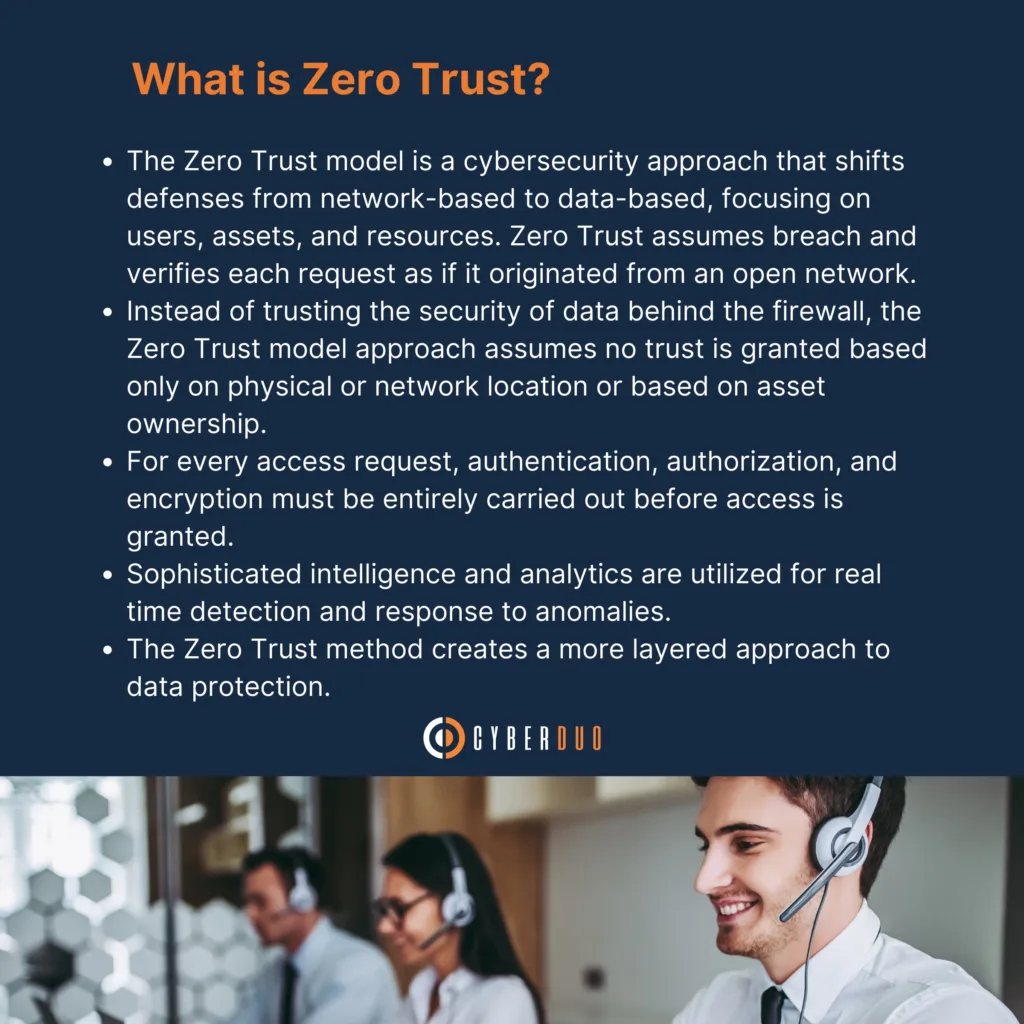
What is the Zero Trust model?
- The Zero Trust model is a cybersecurity approach that shifts defenses from network-based to data-based, focusing on users, assets, and resources.
- The Zero Trust model assumes breach and verifies each request as if it originated from an open network.
- Instead of trusting the security of data behind the firewall, the Zero Trust model approach assumes no trust is granted based only on physical or network location or based on asset ownership.
- For every access request, authentication, authorization, and encryption must be entirely carried out before access is granted.
- Sophisticated intelligence and analytics are utilized for real time detection and response to anomalies.
- The Zero Trust method creates a more layered approach to data protection.
How Microsoft is empowering your Zero Trust journey.
- Passwordless authentication is now available for cloud and hybrid environments and eliminates one of the weakest links in security today. Employees no longer need passwords to sign in to the network. Instead, they sign in with Azure AD biometrics or a tap using the Microsoft Authenticator app or Windows Hello for Business.
- Azure AD Conditional Access is a policy at the heart of Microsoft’s Zero Trust solution. Azure AD Conditional Access uses authentication to enforce stricter policies based on user actions within the app in use or sensitivity of data being accessed. This helps the organization take charge of their data and appropriately protect important information without restricting access to less sensitive content and hampering productivity.
Benefits of adopting the Zero Trust model.
- Zero Trust is an effective approach to ensuring security for today’s evolving workforce, including remote users, bring your own device, and cloud-based assets where data exists outside of the enterprise-owned network.
- A zero trust model allows organizations to effectively categorize digital assets and sensitive data in terms of potential risk and deploy procedures that monitor, identify, and manage the users, devices, and apps accessing the data.
- No matter where the request originates from or what resource it is trying to access, Zero Trust encourages us to “never trust, always verify.”